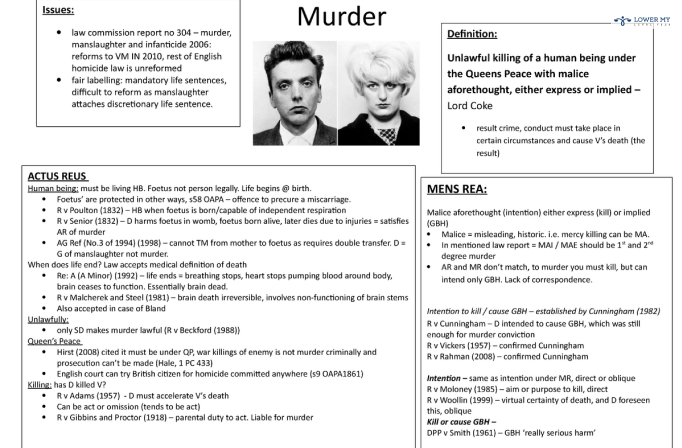Have you ever doubted someone’s intentions? Well, so has the court. In the world of law, there’s a concept called “malice aforethought.” Sounds complex, right? But let’s break it down in simple words.
When we commit a crime, the court or the law often sees it in a different light. They check why we did it. Thus, after they know the reason, they arrive at a better conclusion.
So, can you kill someone in self defense? You will be surprised to know that you may not face murder charges if you do. Of course, you will have to prove that there was plenty of reason behind your actions.
Therefore, this is exactly where the concept of malice aforethought comes into play. What does malice aforethought mean? Malice means Evil. Aforethought means that there was pre-meditation of Evil intentions before committing the act.
Picture This
If we are talking about a real-life scenario, here is what malice afore-thought would look like.
The police catch someone shoplifting. Now, the person claims that the product just fell into their bag. However, soon the security guards go through the surveillance footage. They see that the person was going around that aisle for quite a while.
What does this signify? This signifies that the person had intentions to steal way before doing it.
So, buckle up for our article detailing the legal world of malice afore-thought.
What Is Malice Aforethought In Criminal Law?

The concept of malice afore-thought is not new in the realm of criminal law. By criminal law we always think of trials, courts, defense, indicted vs convicted, etc. But how often do we concentrate on the criminal psychology part of it all?
Malice or ill intentions behind a crime have had a long history in the legal world. It dates back to medieval England. Right from its inception, it signifies a person’s deliberate and premeditated intent to cause harm. After all, to commit a crime, criminal intent is a necessity.
What Are The Essential Parts Of Malice Afore-thought?

Malice aforethought involves someone wanting to hurt or harm another person. Moreover, it is not an accident. They mean to do it.
One Plans Ahead Of The Action
If you are thinking of it as a hunch or a spur-of-the-moment thing, you are wrong. The person has thought about causing harm before actually doing it. For example, when planning to take someone’s life.
These Actions Have Severe Consequences
Malice afore-thought is a serious concept that leads to serious consequences. In law, malice usually relates to really serious actions. These actions usually lead to severe injuries or even death.
No Coincidences or Accidents
Crimes from malice are different from accidents. Accidents happen unexpectedly. Malice leads to someone purposely harming others. Here, the circumstances are completely under their control.
What Does US Law Say About Malice Aforethought?

In the United States, malice afore-thought is a very important and foundational legal concept. Multiple federal and state laws apply to show how they play an integral part in lawmaking. Let’s check some of these laws.
Federal Law
In federal cases, there is no exact law that uses the term “malice afore-thought.” However, federal law clearly recognizes the problem with intentional and harmful actions.
State Laws
State laws may vary from one state to another. However, many states have statutes defining degrees of murder, homicide, etc. There is also a concept of voluntary and involuntary manslaughter where malice afore-thought plays an important role. Pre-meditated crimes often get more severe penalties.
First-Degree Murder
Malice afore-thought is the most important element for a first-degree murder.
Thus, it shows that the person planned or intended to cause serious harm or death.
Second-Degree Murder
Some states consider malice aforethought for second-degree murder as well.
It usually involves an intentional act without premeditation.
When dealing with murder cases, judges and lawyers use the concept of malice. It helps them to distinguish between the various degrees of murder.
First-degree murder will result from intentional and premeditated actions. Hence, this is a crime with clear malice afore-thought. However, second-degree murder could include intentional harm or unintentional harm. It often lacks planning.
Why Is Malice Aforethought Indispensable To Law And The Judiciary?

Lawyers, judges, and lawmakers use the concept of malice afore-thought in every case. They use it to understand the seriousness of the actions of the accused. Sometimes, malice afore-thought is what can turn an accused into a convicted. Thus, malice helps them determine the appropriate legal consequences.
Malice Has Been An Important Factor In Defining Crimes
Lawyers use malice to fit crimes into certain categories. Cases of intentional harm or unintentional death are bound by this single concept.
For example, if someone planned to hurt or kill another person, it will be a crime with malice afore-thought. However, if they do it out of self-defense, they might not face charges if the court deems fit.
Cunningham Recklessness And Malice Afore-thought

In the 1957 case of R v Cunningham, we see one of the true interpretations of the concept. A person removed a gas meter to steal money. This accidentally led to a gas leak that caused the poisoning of his mother-in-law.
The prosecution charged him with endangering her life. During the trial, the judge interpreted the meaning of “malice” to be acting wickedly. However, the defendant appealed. He held that the judge’s definition was wrong. The appeal was accepted. Higher courts found that the judge’s instruction confused the jury.
Since then, the correct interpretation of malice was whether the person intended harm. It could also include instances where a person was reckless about causing harm. This rule is what we now call the “Cunningham Recklessness.”
To Conclude
Over time, the idea of malice aforethought as a legal concept got more detailed as laws developed. Lawmakers made clear rules about it. Malice has its traces back to the common law traditions.
Later, landmark cases led to several interpretations of malice in different situations. In modern times, malice afore-thought continues to change and adapt. The definition fits and shapes contemporary legal needs simultaneously.
However, it still remains an important part of intentional and harmful actions in violent crimes. This concept is the key to fair decisions in the legal world.
Read Also:






